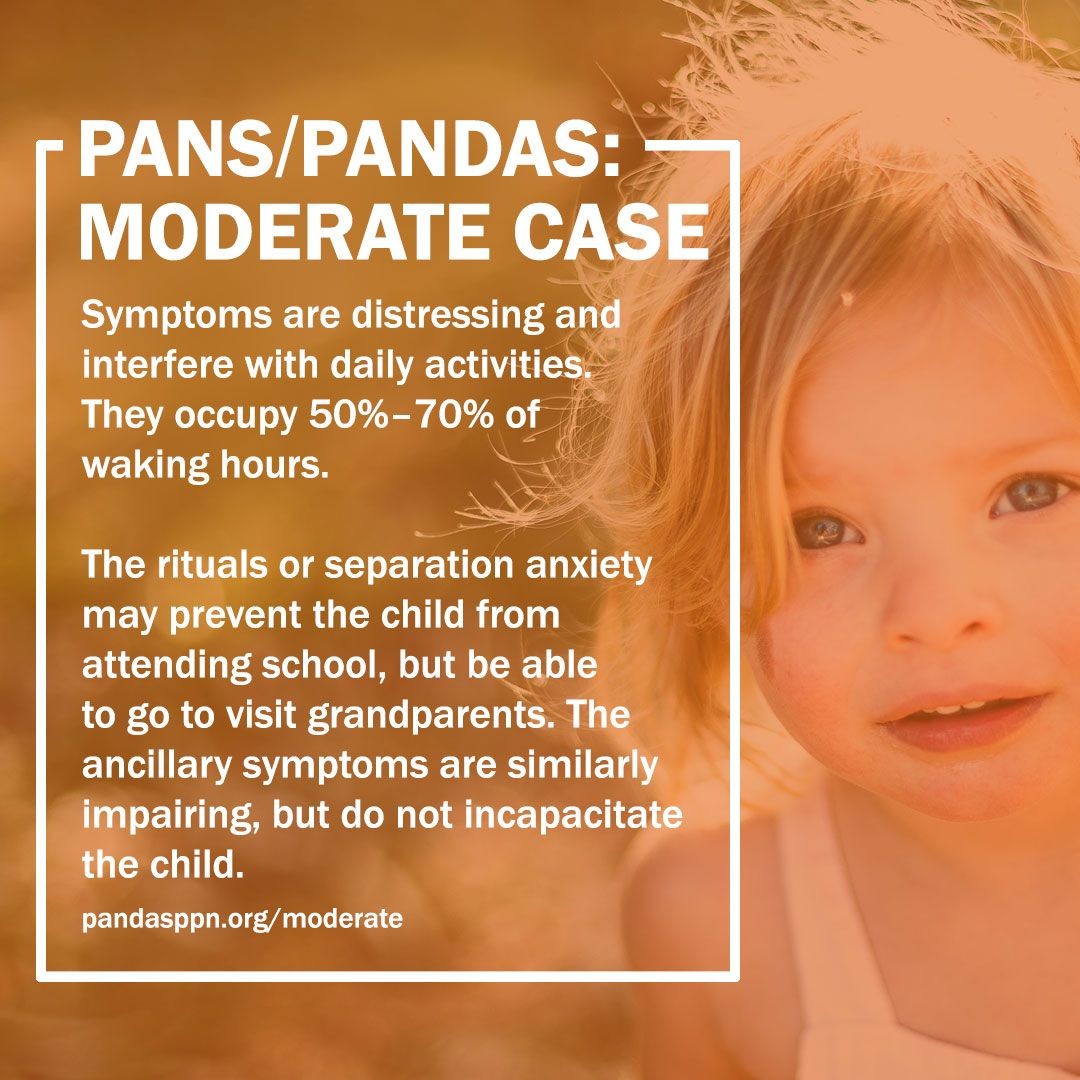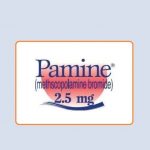
Contents
- 1 PANDAS
- 1.0.1 Is PANDAS common?
- 1.0.2 What is the history of PANDAS?
- 1.0.3 What causes PANDAS?
- 1.0.4 What are risk factors for PANDAS?
- 1.0.5 What are symptoms and signs of PANDAS?
- 1.0.6 What type of doctors treat PANDAS?
- 1.0.7 How do health care professionals diagnose PANDAS?
- 1.0.8 What is the treatment for PANDAS?
- 1.0.9 What are complications of PANDAS?
- 1.0.10 What is the prognosis of PANDAS?
- 1.0.11 Is it possible to prevent PANDAS?
PANDAS
PANDAS is an acronym that refers to "pediatric autoimmune neuropsychiatric disorders associated with streptococcal infections." It is diagnosed clinically after a patient develops behavioral and physical symptoms following a streptococcal infection (strep throat, sinusitis, cellulitis, or scarlet fever).
Is PANDAS common?
PANDAS is rare. Approximately one in 200 children are affected, according to PANDAS Network, a research nonprofit for the disease.
Doctors may miss PANDAS diagnoses due to common symptoms associated with the disease. Some researchers recommend categorizing PANDAS as a subset of other disorders, which includes similar neuropsychiatric symptoms called CANS or PANS.
What is the history of PANDAS?
PANDAS was described in the late 1990s after investigators identified a subgroup of children who developed a sudden onset of obsessive-compulsive disorder (OCD) symptoms, vocal and motor tics, and other behavioral changes. They identified a common association ─ recent or active infection with a beta-hemolytic Streptococcus, the bacteria that causes strep throat.
Researchers also identified other infectious agents known to cause significant auto-inflammatory reactions associated with neuropsychiatric symptoms, including influenza, varicella, and Borrelia burgdorferi (Lyme disease), but the diagnosis of PANDAS is limited to streptococcal infections.
What causes PANDAS?
The consensus is that PANDAS is partly caused by an autoimmune response to a strep infection
Streptococcus is associated with immune-related disorders like rheumatic fever, scarlet fever, and acute glomerulonephritis (a kidney disorder).
The strep molecules hide from the host immune system by mimicking host cells.
The immune system recognizes the foreign cells, and the produced antibodies attack the bacterium, and unfortunately, some of the host’s own cells are attacked due to cross-reactivity. In some situations, these antibodies attack brain cells, causing OCD, tics, and other symptoms frequently observed in PANDAS patients.
What are risk factors for PANDAS?
Multiple risk factors may play a role in the development of PANDAS, including recurrent group A streptococcal infections, family history of rheumatic fever, and the mother’s history of having an autoimmune disease. PANDAS is also more common in boys and prepubertal children.
What are symptoms and signs of PANDAS?
PANDAS symptoms are similar to obsessive-compulsive disorder (OCD), attention deficit hyperactivity disorder (ADHD), and motor or verbal tics.
Other symptoms include separation anxiety, mood changes, changes in handwriting, bedwetting or change in urinary frequency, and sleep disturbances.
Symptoms appear suddenly, and the recovery period is variable. Often the symptoms worsen during streptococcal infections and improve in between.
What type of doctors treat PANDAS?
Most children will first be seen by their pediatrician when symptoms develop.
Further management requires referral to a psychiatrist or other mental health professional who can prescribe medication and provide cognitive behavioral therapy.
Other physicians that may aid in the management of PANDAS include a pediatric neurologist or behavioral developmental specialist.
IMAGES
How do health care professionals diagnose PANDAS?
PANDAS is diagnosed clinically, depending more on history and physical examination rather than other specific studies. The following summarizes the five criteria used to diagnose PANDAS:
- Presence of obsessive-compulsive disorder (OCD) and/or a tic disorder, ADHD symptoms, or oppositional behaviors
- Abrupt onset and/or symptoms vary in intensity
- Association with neurological abnormalities, including motor hyperactivity, or abnormal movements such as choreiform movements, other combinations of neuropsychiatric symptoms, personality changes, and deterioration in math skills and handwriting
- The onset of symptoms from age 3 years to puberty
- Association with group A beta-hemolytic streptococcal infection either by culture or other evidence of infection
There are five criteria used to diagnose the disorder and must include the sudden onset of OCD, tics, ADHD, or a rapid worsening of existing symptoms.
In addition to the clinical diagnosis, other testing may be performed to rule out alternative explanations for the symptoms. Distinguishing PANDAS from Tourette’s syndrome, OCD, or Sydenham chorea is not always simple.
What is the treatment for PANDAS?
First-line treatments for PANDAS include cognitive behavioral therapy (CBT) and medication, depending on the breadth and severity of symptoms.
- The primary medical therapy focuses on controlling OCD symptoms, and therefore selective serotonin reuptake inhibitor (SSRI) medications like fluoxetine (Prozac) are frequently used.
- The other acute measure is treating the strep infection associated with the symptoms.
- Antibiotics are the treatment of choice for an active strep throat infection. Options include penicillin, amoxicillin (Amoxil), azithromycin (Zithromax), or another antibiotic.
For severe and refractory symptoms, other treatments such as intravenous immunoglobulin, steroids, and plasmapheresis (plasma exchange therapy) have been found effective. More studies are needed to fully recommend immune-modulating therapies.
What are complications of PANDAS?
PANDAS is not associated with the development of heart issues seen in children with rheumatic fever. Untreated or unrecognized PANDAS may increase the risk of having OCD and tic disorder into adulthood.
What is the prognosis of PANDAS?
Though some children completely recover from PANDAS, some develop persistent neuropsychiatric symptoms or worsening symptoms after each strep infection.
It is not possible to predict which children will be affected or how severely. The main goal of therapy is to decrease behaviors that might interfere with daily life and school.
Is it possible to prevent PANDAS?
For children diagnosed with PANDAS, there is some evidence that prophylactic antibiotics may prevent strep infections and worsening symptoms. However, there are side effects associated with daily antibiotic treatment. Further studies are needed to confirm the effectiveness of preventive treatment.
Surgical removal of the tonsils and adenoids has not shown to be effective in preventing PANDAS and is not recommended.
By clicking Submit, I agree to the MedicineNet’s Terms & Conditions & Privacy Policy and understand that I may opt out of MedicineNet’s subscriptions at any time.
Murphy, T., et al. "Pediatric Acute-Onset Neuropsychiatric Syndrome." Psychiatric Clinics of North America 37 (2014): 353-374.
Singer, H., et al. "Moving from PANDAS to CANS." Journal of Pediatrics 160.5 May 2012: 725-731.
Swedo, S.E., et al. "From research subgroup to clinical syndrome: Modifying the PANDAS criteria to describe PANS." Pediatric & Therapeutics 2.2 (2012).


